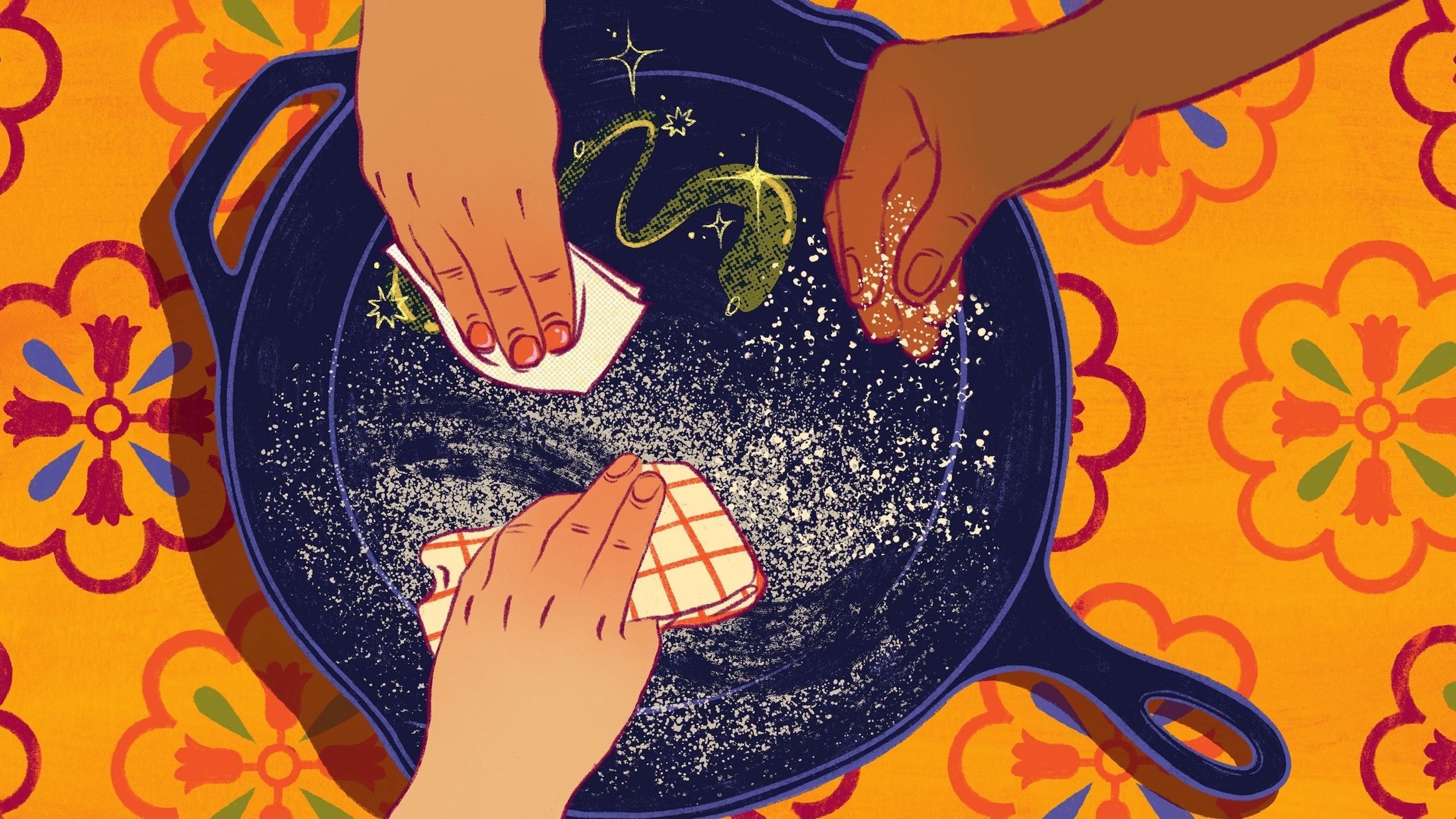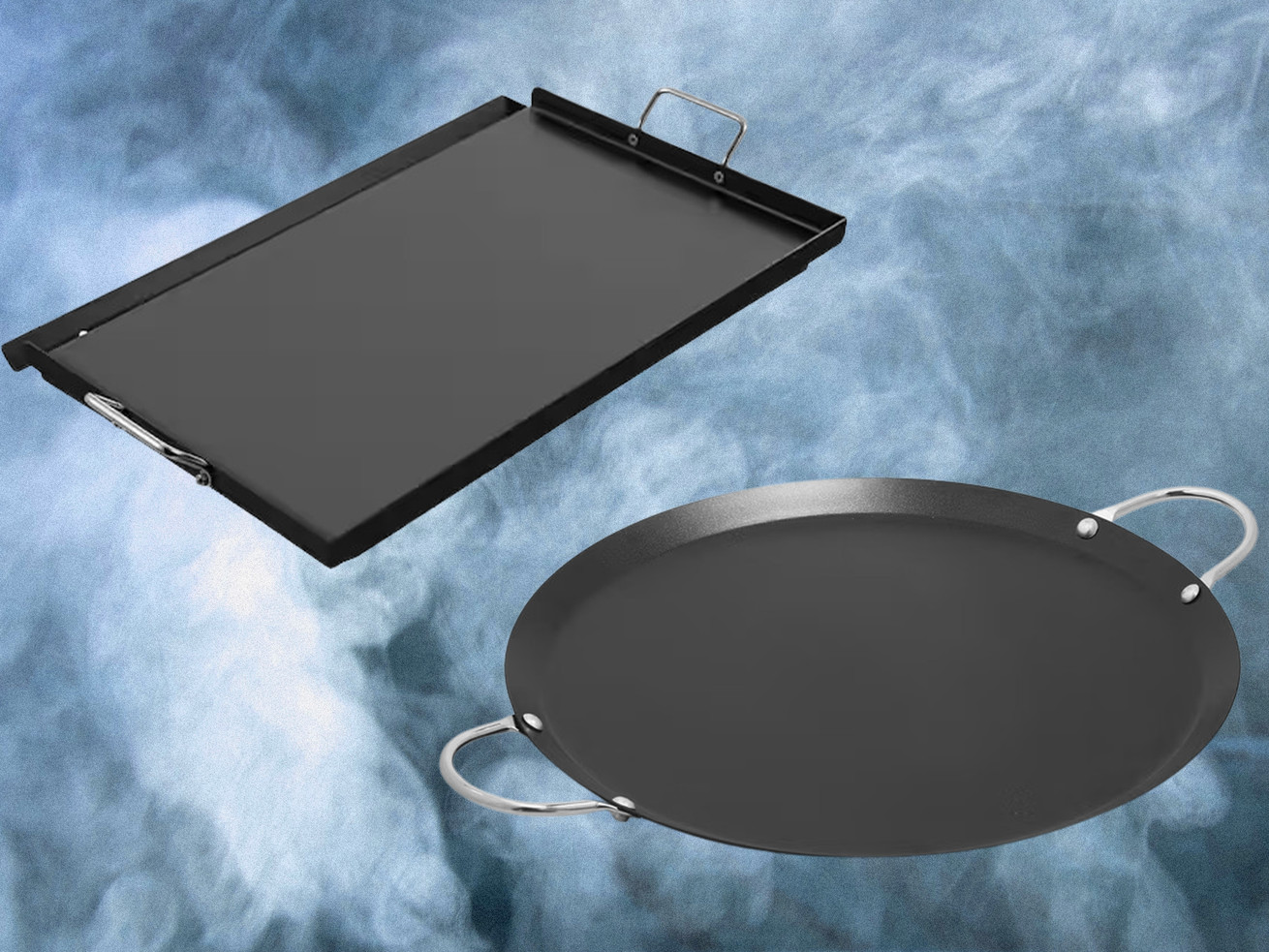Few kitchen tools inspire devotion quite like the cast-iron skillet. It’s the kind of pan that carries stories of grandmothers’ Sunday chicken, late-night cornbread experiments, impromptu camping trips, and life’s less-than-great moments healed by a sizzling steak. A well-seasoned skillet can easily become more than cookware; it’s an heirloom meant for generations to come. But for something so beloved, cast iron is often misunderstood, either babied with nervous delicacy or left to rust in a graveyard of neglect. The truth? Cast iron is nearly indestructible, and with a few simple habits, it can outlive you.
Here’s how to make your cast iron skillet last forever — really, forever – without treating it like a high-maintenance houseplant.
What exactly is cast-iron seasoning?
A cast-iron skillet isn’t like other pans. It’s not made with nonstick coating or delicate materials. It’s iron poured into a mold — dense, rugged, and slow to heat, but brilliant at retaining it.
“When cast iron comes out of its mold, it has the rough texture of sand,” says Will Copenhaver, the vice president of marketing and sales at Smithey, a cookware company that specializes in heirloom cast iron. “Seasoning plays a very important role in traditional rough cast iron. It acts as a filler for the porous surface and ensures that food doesn’t stick – cast iron just wouldn’t be very functional without it.”
When you season cast iron, you’re building up a thin, protective layer of polymerized oil that guards against rust and eventually creates a natural nonstick surface. That black patina isn’t grime or wear, it’s the goal.
Most cast-iron skillets now come pre-seasoned, but it’s still worth reinforcing the surface from the start. The best way to do this is to rub a thin coat of neutral oil all over the skillet, inside and out, including the handle, and then buff it with a paper towel until it appears nearly dry. Place the skillet upside down in a hot oven, around 450 degrees, with a sheet of foil on the rack below to catch any drips. After an hour, turn off the heat and let the skillet cool in the oven.
Doing this once or twice when the pan is new helps build a base coat, but over time, the seasoning gets stronger just by cooking regularly, especially if you’re making foods with some fat.
How do you properly care for a cast-iron skillet so that it lasts a lifetime?
Chef Jason Lalacona, the head chef at Miel in Nashville, remembers feeling unsure about cast iron in his early days in the kitchen. “As a guy from the North, cast-iron pans always intimidated me,” he says. “The benefits preached to me never seemed to outweigh the irreparable damage that I could accidentally cause with one wrong move, or soap. Or so I thought.”
There’s a persistent myth that cast iron is delicate. That one wrong move (or dish soap) will destroy it. In reality, it’s one of the most forgiving pieces of cookware in your kitchen – you just need to develop a rhythm with it.
After each use, let the pan cool slightly, then rinse it under warm water. If there’s anything stuck to it, use a gentle sponge or a bit of kosher salt as a scrub. Despite what you may have heard, a few drops of dish soap won’t hurt the pan. Just avoid soaking or scrubbing it aggressively with anything too harsh unless you’re planning to reseason after.
Once it’s clean, dry the skillet thoroughly. Set it on a warm burner for a minute or two to evaporate every bit of moisture. Then, drizzle in a small amount of neutral oil and wipe the entire surface with a paper towel. This simple act of maintenance, done each time, is what keeps the skillet glossy and rust-free, and pays off when you start to cook with confidence. Lalacona has found cast iron to be particularly effective for high-heat tasks. “I love to use cast iron for seafood, especially scallops,” he says. The pan retains heat so well, he explains, and the sear is extremely even.
How do you revive an old, rusty skillet?
Even with the best intentions, rust happens. Maybe the skillet sat in the sink too long. Maybe someone “helped” you by soaking it overnight. But unlike a scratched-up nonstick pan, cast iron isn’t ruined by a little surface rust – it’s just asking to be refreshed.
Start by scrubbing the rust away using steel wool or a metal scouring pad until you reach clean, raw iron. Then wash the pan with soap and warm water, and dry it completely, ideally by heating it briefly on the stove. Once it’s dry, reseason it just as you would a new pan: a thin coat of oil, a good buff, and an hour or so in a 450-degree oven.
On the other hand, if the rust is a minor case of a few specks, you may be able to smooth them out with a little coarse salt and oil, no oven time required.
In most cases, one or two rounds of scrubbing will restore the skillet to its original glory. If you have a tougher case, some brands, such as Smithey, offer restoration services.
The bottom line? Don’t overthink it. Cast iron is neither high-tech nor high-strung. It just needs consistent, simple care. Clean it gently, dry it completely, and give it a quick rub of oil before you put it away. You’ll be rewarded with decades, if not generations, of reliable performance.



